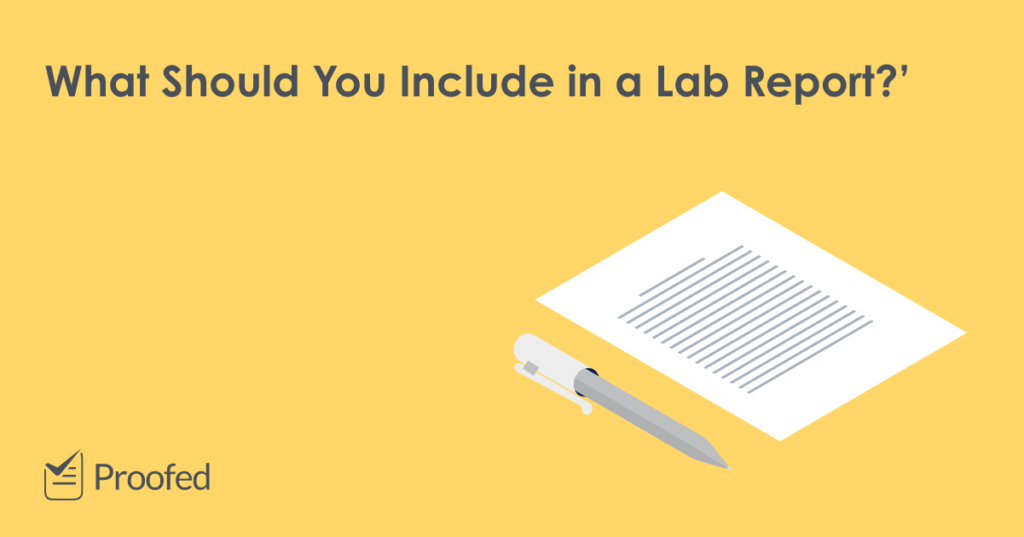If you’ve done a laboratory experiment as part of your studies, you might need to write up a report afterwards. But what should a lab report include?
The exact answer will depend on what and where you are studying, so make sure to check your style guide if you have one. But most lab reports have a similar basic structure, which is usually something like this:
- Introduction – Some background information about your experiment.
- Materials and Methods – What you used and what you did.
- Data and Results – The data you obtained from your experiment.
- Discussion/Analysis – An interpretation of your data and its significance.
- Conclusion – A brief recap of key findings and any conclusions you draw.
- References – A list of sources you’ve used in your research.
Now, let’s look at each section in a bit more detail.
1. Introduction
In your introduction, give some context for your experiment, such as:
- The scientific concept or theory that your work was based on.
- The objective of your experiment – what were you trying to find out?
- Your initial hypothesis and why you expected this outcome.
Don’t forget to cite sources if your work builds on previous research.
2. Materials and Methods
Next, you’ll need to describe how you conducted the experiment. And this means setting out the materials and methods used:
- For the materials, list everything you used for your experiment – technical equipment, software, chemical solutions, etc.
- For the methodology, describe how you carried out your experiment, step by step. You could even break this down into shorter sections with their own subheadings (e.g., “Setup,” “Sample Processing”).
In both cases, your descriptions should be detailed. Ideally, a stranger should be able to repeat your experiment based on the information you provide.
3. Data and Results
Once you’ve described what you did, it’s time to show off the data you obtained. This should be a combination of:
- Visual and numerical data (e.g., clearly labelled tables, charts, and graphs).
- Supporting words (i.e., brief descriptions of key data from charts and tables to help direct the reader towards the most important information).
Stick to the facts here, such as observable statistics and trends. You’ll be able to discuss the significance of the results in the next section.
Find this useful?
Subscribe to our newsletter and get writing tips from our editors straight to your inbox.
4. Discussion/Analysis
Here, you cover what you’ve learned by answering the following questions:
- Does the data support your initial hypothesis?
- How do your results relate to the theories you were exploring? Do they support or conflict with previous studies you mentioned?
- What were the limitations of your study design, and were any errors made? Could these have biased your results?
- What improvements could be made in future experiments?
In other words, this is where you look at the data in the context of your research as a whole, including the significance and reliability of your results.
5. Conclusion
The conclusion of a lab report is typically quite short (a paragraph or two). Use it to give a brief recap of your main findings. After this, you should highlight any practical or theoretical implications of your results.
6. References
Finally, list the details of any previous research that your work was based on and any other publications or sources that you’ve referred to in your report.
This will usually involve following a specific referencing system, so check your style guide or ask a lecturer to make sure you know which one to use.
Expert Lab Report Proofreading
The structure above covers the key details you’ll need in a lab report. However, the exact structure may vary (e.g., some schools and colleges prefer students to have separate materials and methods sections), so make sure to follow your style guide when writing up research.
And for help checking your academic writing, you can upload your lab report to our proofreading service. Our expert editors will ensure it is clear, concise, and error free, from the introduction to the reference list.



